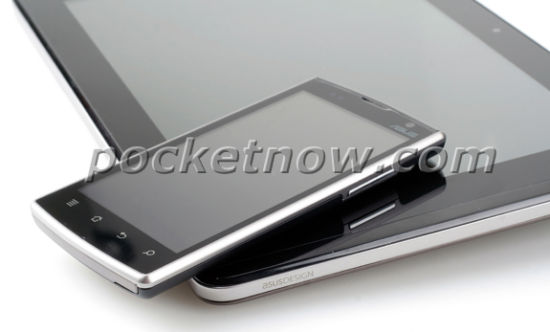 Chery Automobile, China’s only major car maker without a foreigner partner, is getting ready to tie the knot with Japan’s Subaru, in what looks like a smart marriage, while a separate newly announced plan for a new plant in Venezuela looks more questionable. First Subaru. After months of on-again-off-again talks, Chery and Subaru’s Japanese parent have reached an agreement in principle that would see them co-produce Subaru cars in northeastern China, foreign media are reporting. (English article) This deal looks like a really good fit for both sides, as it brings Subaru’s strength in the lower end quality auto space to Chery, which boasts not only strong manufacturing expertise and sales channels, but also a solid reputation in China’s affordable car end market. This tie-up should help Chery diversify to a slightly more upmarket segment, and I could even see an eventual equity swap similar to Ford’s (NYSE: F) previous ownership of a stake in Mazda that worked quite well. Now Venezuela. It seems Chery is getting ready to build a $200 million plant in the South American country, in a move that seems to totally lack commercial sense and smells much more of politics. Everyone knows that China is trying to cozy up to Venezuela, which has alienated most of the West that used to be the biggest customer for its plentiful oil. China Development Bank is even underwriting this latest Chery deal, further underscoring its political nature. For sure, Chery can afford to lose this $200 million investment, which isn’t huge. But wasting its time and effort on this kind of initiative can only be a distraction in the long run that this promising Chinese automaker doesn’t need.
Chery Automobile, China’s only major car maker without a foreigner partner, is getting ready to tie the knot with Japan’s Subaru, in what looks like a smart marriage, while a separate newly announced plan for a new plant in Venezuela looks more questionable. First Subaru. After months of on-again-off-again talks, Chery and Subaru’s Japanese parent have reached an agreement in principle that would see them co-produce Subaru cars in northeastern China, foreign media are reporting. (English article) This deal looks like a really good fit for both sides, as it brings Subaru’s strength in the lower end quality auto space to Chery, which boasts not only strong manufacturing expertise and sales channels, but also a solid reputation in China’s affordable car end market. This tie-up should help Chery diversify to a slightly more upmarket segment, and I could even see an eventual equity swap similar to Ford’s (NYSE: F) previous ownership of a stake in Mazda that worked quite well. Now Venezuela. It seems Chery is getting ready to build a $200 million plant in the South American country, in a move that seems to totally lack commercial sense and smells much more of politics. Everyone knows that China is trying to cozy up to Venezuela, which has alienated most of the West that used to be the biggest customer for its plentiful oil. China Development Bank is even underwriting this latest Chery deal, further underscoring its political nature. For sure, Chery can afford to lose this $200 million investment, which isn’t huge. But wasting its time and effort on this kind of initiative can only be a distraction in the long run that this promising Chinese automaker doesn’t need.
Bottom line: Chery’s tie-up with Subaru looks like a smart marriage that could boost Chery at home and eventually abroad, while its Venezuela plan looks like a big mistake.
作为中国唯一一家尚没有外国合作夥伴的大型汽车制造商,奇瑞汽车现正打算与日本的斯巴鲁汽车联手,这似乎是一桩聪明的联姻。但奇瑞最近宣布在委内瑞拉建新厂的计划看起来却问题重重。先来谈谈与斯巴鲁的合作。据外国媒体报导,经过数月时断时续的谈判,奇瑞与斯巴鲁的日本母公司终於达成原则协议,双方将在中国东北部合资生产斯巴鲁汽车。这个协议看起来对双方都非常合适,因为斯巴鲁可将其在“较低端”优质汽车生产领域的优势带给奇瑞,而奇瑞不仅拥有强大的制造功底和销售渠道,还在中国中低端汽车市场享有不错的口碑。这个联合应可帮助奇瑞进入较为高端的市场,我甚至感到双方最终有可能会达成股权互换协议,就像以前福特和马自达之间相当成功的合作那样。现在谈谈在委内瑞拉建厂的事。奇瑞似打算投入2亿美元在这个南美国家建一座工厂,此举看起来完全缺乏商业头脑,更多是出於政治考虑。大家都知道,中国想与产油大国委内瑞拉搞好关系,後者与大部分西方国家的关系已经恶化。中国国家开发银行甚至在支持奇瑞委内瑞拉建厂一事,更加凸显出其中的政治意味。当然,即使这笔投资搞砸了,2亿美元的损失对奇瑞来说还是可以承受的。但长远来看,在这种事情上浪费时间和精力,对於这家前景光明的中国汽车制造商来说,实在是没有必要的分心之举。
一句话:奇瑞与斯巴鲁的联姻似是明智之举,有可能推动奇瑞在国内外均有所斩获,但其在委内瑞拉建厂的计划看来是个败笔。
Related postings 相关文章:
◙ Autos: Good Times Screech to a Halt 中国汽车业:当繁荣已成往事
◙ GM’s China Growth Story Stalls Out 通用汽车在华增长势头受挫
◙ China’s Chery: Not Quite Ready for Outback Prime Time

 now going out and trying to set up an alliance of telcos, cellphone makers and anyone else who will listen to try to promote this system. (
now going out and trying to set up an alliance of telcos, cellphone makers and anyone else who will listen to try to promote this system. ( Lenovo (HKEx: 992) just can’t seem to get big Western markets out of its mind, even as it bills itself as a developing markets specialist. That’s the only conclusion I can reach after reading that Lenovo will buy Germany’s Medion AG (Frankfurt: MDN) in a deal valued at $670 million, its biggest overseas M&A since its purchase of IBM’s (NYSE: IBM) computer business in 2005. (
Lenovo (HKEx: 992) just can’t seem to get big Western markets out of its mind, even as it bills itself as a developing markets specialist. That’s the only conclusion I can reach after reading that Lenovo will buy Germany’s Medion AG (Frankfurt: MDN) in a deal valued at $670 million, its biggest overseas M&A since its purchase of IBM’s (NYSE: IBM) computer business in 2005. ( Canadian Solar, in a relatively uneven arrangement that will see GCL provide 90 percent of the registered capital. (
Canadian Solar, in a relatively uneven arrangement that will see GCL provide 90 percent of the registered capital. ( won’t improve and new buyers are becoming a rarity, I expect to see sentiment slide sharply, probably by the end of this year. When that happens, look for not only E-House, but peers like Soufun (NYSE: SFUN) to slip even further. The downturn could even drag down big-name developers like Vanke (Shenzhen: 000001), in a correction that could eventually see market values drop by as much as 30-40 percent from their current overinflated highs.
won’t improve and new buyers are becoming a rarity, I expect to see sentiment slide sharply, probably by the end of this year. When that happens, look for not only E-House, but peers like Soufun (NYSE: SFUN) to slip even further. The downturn could even drag down big-name developers like Vanke (Shenzhen: 000001), in a correction that could eventually see market values drop by as much as 30-40 percent from their current overinflated highs. First it was LDK Solar (NYSE: LDK), and now wind power company China Ming Yang (NYSE: MY) has become the latest victim of financial markets that are getting cold feet over the alternate energy story. Ming Yang has informed the world it’s shelving a secondary offering plan and even considering a share buyback due to its low stock price. (
First it was LDK Solar (NYSE: LDK), and now wind power company China Ming Yang (NYSE: MY) has become the latest victim of financial markets that are getting cold feet over the alternate energy story. Ming Yang has informed the world it’s shelving a secondary offering plan and even considering a share buyback due to its low stock price. ( feel like carrying around a bulky tablet. Of course, with a product like this design will be key and only time will tell if consumers like it. I personally like Asustek for its willingness to take risks in new product development, which produced the wildly successful netbook at Computex several years ago. This new product is intriguing because it should appeal to the large number of consumers who want to simplify their lives by not having to carry around so many devices, adapters and so forth. Given Asustek’s record for innovation and the fact that I really think demand exists for this kind of product, I would say the Padfone could stand a strong chance for success, in which case we could see copycats piling into the market by the end of the year.
feel like carrying around a bulky tablet. Of course, with a product like this design will be key and only time will tell if consumers like it. I personally like Asustek for its willingness to take risks in new product development, which produced the wildly successful netbook at Computex several years ago. This new product is intriguing because it should appeal to the large number of consumers who want to simplify their lives by not having to carry around so many devices, adapters and so forth. Given Asustek’s record for innovation and the fact that I really think demand exists for this kind of product, I would say the Padfone could stand a strong chance for success, in which case we could see copycats piling into the market by the end of the year. brilliant move by Sina to beef up its social networking unit by combining a Twitter-like offering in Weibo with a Facebook-like one in this new Qing service. Of course, the end goal in all this is to create a company that can ultimately generate big profits and be spun off. Weibo has already shown its early moves in this direction, announcing its first acquisition a few weeks ago after being formally spun off from its parent. (
brilliant move by Sina to beef up its social networking unit by combining a Twitter-like offering in Weibo with a Facebook-like one in this new Qing service. Of course, the end goal in all this is to create a company that can ultimately generate big profits and be spun off. Weibo has already shown its early moves in this direction, announcing its first acquisition a few weeks ago after being formally spun off from its parent. ( Chery Automobile, China’s only major car maker without a foreigner partner, is getting ready to tie the knot with Japan’s Subaru, in what looks like a smart marriage, while a separate newly announced plan for a new plant in Venezuela looks more questionable. First Subaru. After months of on-again-off-again talks, Chery and Subaru’s Japanese parent have reached an agreement in principle that would see them co-produce Subaru cars in northeastern China, foreign media are reporting. (
Chery Automobile, China’s only major car maker without a foreigner partner, is getting ready to tie the knot with Japan’s Subaru, in what looks like a smart marriage, while a separate newly announced plan for a new plant in Venezuela looks more questionable. First Subaru. After months of on-again-off-again talks, Chery and Subaru’s Japanese parent have reached an agreement in principle that would see them co-produce Subaru cars in northeastern China, foreign media are reporting. (